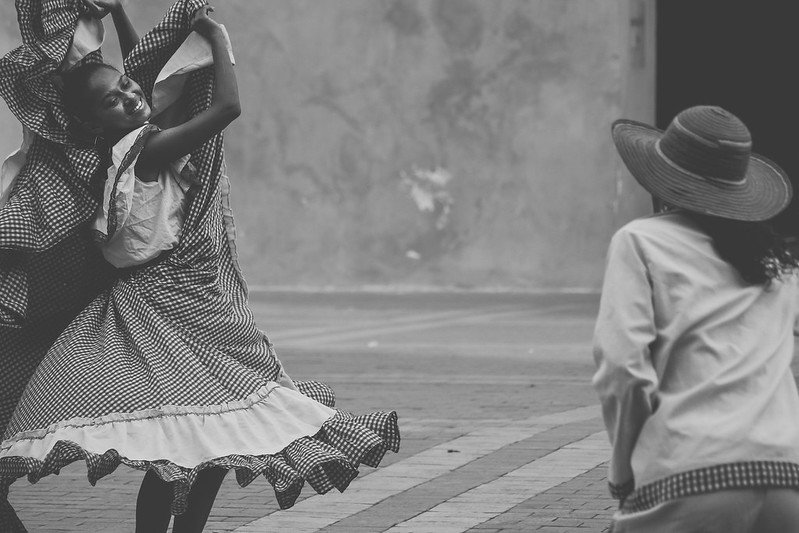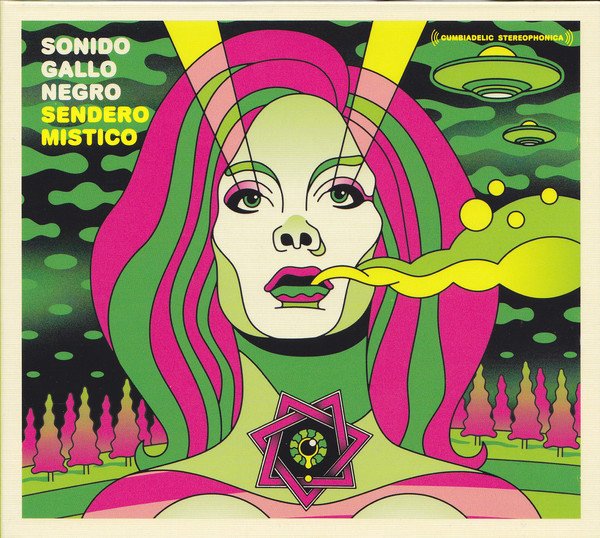Feeling the Beat: The Evolution of Cumbia Music
It’s no secret that Mexico City is home to roaming mariachi band filled corners and dance halls where cumbia rhythms seem to seep out of the walls and onto the streets. Like most origin stories, the history of cumbia music is deep and layered; a mash-up of global genres, political leanings and a bevy of instruments.
A staple of Latin America, cumbia was born in Colombia at the end of the 19th century, and was heavily influenced by African, American and European styles alongside indiegenious tribal instruments: flutes, drums, accordions and the guacharacas. And, while there are countless styles, traditional cumbia is still known for its universal, percussion-leaning double beat.
Cumbia also found roots in Argentina and Peru, where in the 1970s it was known as psychedelic cumbia, especially around the Amazonian towns where there was mass oil drilling. Other unique styles emerged: a slower accordion rhythm called cumbia nortena and cumbia andina which leaned on Latin American folkloric music, salsa and the Panama-conceived reggaetón. The cumbia dance style follows straightforward and minimal movements– and was said to have mimicked a courtship dance style done by African slaves on the coast of northern Colombia.
In the 1940s, cumbia arrived in the northeastern town of Monterrey, Mexico as thousands of migrants were looking for a better way of life. The first cumbia song recorded was by Luis Carlos Meyer, followed by popular artists like Tony Camargo and Rafael de Paz. Later, the genre fanned out to the urban, working-class Mexico City neighborhoods of Penon de los Banos, San Juan de Aragon and Tepito. Then, in the 1980s, big outdoor parties called sonidos took to the streets – but by the 1990s police had shut down the gatherings. Of course, this didn’t stop cumbia from continuing to evolve. As the saying goes: the band always plays on.
Today in Mexico, you’ll find cumbia alive and well in bars, outdoor fairs and late-night dance salons. DJ’s known as sonideras often spin a mix of early classic and electro cumbias with the diverse beats of ska, hip hop and reggae. In most modern day interpretations, you can still hear trumpets, keyboards and synthesizers. Native Mexico City artists like Sonido Gallo Negro, the 9-piece instrumental band is one of the driving fores of the genre, mixing traditional rhythms with cha-cha-cha and rumba for a smooth, trippy and danceable sound. The band La Redada, a sextet, also brings its own unique cumbia meldies with assorted woodwinds, organ, drums, bass and an electronic musical instrument called the theremin.
The cumbra tradition is still reserved for Mexican weddings, patron saint holidays, Christmas, and even quinceaneras (a celebration of a woman's 15th birthday). And today, no matter the venue or occasion; the wave-like tempo and rhythmic journey of the beats, beckons dancing into the wee hours of the morning (and happily, you can still dance your ass off in Mexico City).
Address Book
Salon San Luis: Classic red-light-hued Mexican drinking and dancing salon San Luis Potosí 26, Roma Sur, Cuauhtémoc, 06700 Ciudad de México, CDMX, México
Mama Rumba: A lively spot with a younger crowd and a small dance floor C. Querétaro 230, Roma Nte., Cuauhtémoc, 06700 Ciudad de México, CDMX, Mexico
La Chicha: Vintage decor and live music plus tequila, mezcal and vegetarian snacks.Orizaba 171-4 Col. Roma Norte, casi esq, San Luis, CDMX, Mexico
Salon Paraiso: Bustling, large-scaled cumbia-heavy club Calle José María Izazaga, 06010 Cuauhtémoc, Ciudad de México
Foro Hilvana: DJs spin cumbia tunes and yes, there is salsa too Av. México-Tenochtitlán 17, Buenavista, Cuauhtémoc, 06350 Ciudad de México, CDMX, México







